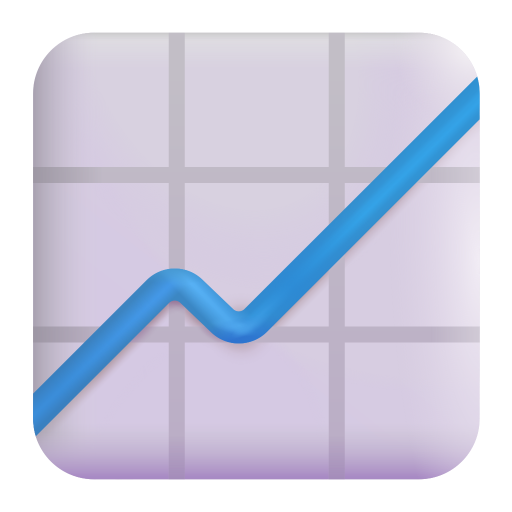There’s a feeling that’s become all too common in marketing today: the sense of being caught in a frustrating paradox. On one hand, the mandate has never been clearer. Consumers are crying out for genuine, one-to-one personalization. They expect brands to understand them, anticipate their needs, and communicate with a level of relevance that feels like a real conversation. On the other hand, the reality of a marketer’s day is a frantic, high-speed collision with operational overload. The sheer volume of tasks required to keep the marketing engine running simply has become a suffocating force.
This is the central crisis we face: the demand for deep, strategic work is at an all-time high, while the time available to perform it is vanishingly small. We call this the “tyranny of operational frequency”, the relentless, daily grind of execution that consumes creativity and buries strategy. It’s a battle being fought on two fronts, and for many teams, it feels like a losing one.
But what if the solution wasn’t to work harder or faster? What if, instead, you could fundamentally change the nature of the work itself? Imagine having a team of dedicated, highly skilled virtual colleagues whose entire purpose was to master that operational grind, freeing you and your team to focus on the high-impact, creative thinking that only humans can do. This isn’t a futuristic dream; it’s the practical, powerful reality of Agentic AI.
Drowning in the Daily Grind: The Tyranny of Operational Frequency
Before we look forward, let’s be brutally honest about the problem. “Operational frequency” isn’t just a buzzword; it’s the lived experience of marketers everywhere. It’s the staggering fact that up to 60% of a marketer’s week is devoured not by strategy or innovation, but by the gears of execution. It’s the endless, repetitive cycle of:
- Manual Segmentation: Spending hours pulling and refining lists for every new email blast, push notification, or automation, often based on static, outdated data.
- Constant Scheduling: Juggling complex content calendars across a dozen different channels, each with its own timing, format, and audience nuances.
- Repetitive A/B Testing: Endlessly tweaking minor variables, a subject line here, a button color there, in a reactive, never-ending quest for marginal gains.
- Tedious Reporting: Compiling performance data from disparate sources into spreadsheets and presentations to justify past actions and plan the next move.
This isn’t just inefficient; it’s corrosive. It leads directly to creative burnout, strategic neglect, and a brand of “personalization” that is often little more than formulaic tokenism. When teams are exhausted, the connection they hope to build with customers feels just as tired.
To make matters worse, early attempts to integrate AI often failed to deliver relief. Instead of simplifying workflows, they introduced more dashboards to monitor, more complex prompts to master, and more friction in the creative process. It’s no surprise that nearly two-thirds of marketers still struggle to make AI a staple of their daily work. They were promised a partner but were handed another complicated tool.
A New Paradigm: Your Virtual Marketing Team Has Arrived
This is precisely where Agentic AI draws its line in the sand. We fundamentally reframed the role of AI. We stopped thinking of it as a passive machine that takes orders and started imagining it as an active, collaborative partner, or better yet, a dedicated team of virtual specialists. This isn’t a single tool; it’s an entire orchestra of agents, each playing a unique and vital role, all working in concert to master the operational symphony so you can be the conductor.
The goal is to delegate the entire operational workflow, from audience intelligence to creative production and campaign execution. This act of delegation is what liberates human marketers, restoring their most valuable asset: time to think, to create, and to connect.
Use Cases for Autonomous Agents Address
Let’s introduce the specialists on your new virtual team. Each agent is designed to take complete ownership of a critical, high-frequency marketing function, transforming it from a manual chore into an automated, intelligent process.
- The Segment Agent puts an end to the soul-crushing task of manual list-pulling. Working 24/7, it acts as a master audience builder, creating and maintaining hundreds of dynamic micro-segments based on real-time behavioral signals, evolving preferences, and hidden affinities. It moves beyond static data to give you audiences that are alive and constantly updating. This means you can instantly target incredibly nuanced groups, like “high-value customers who browse on weekends and are at risk of churning”, with a level of precision that would be impossible to achieve manually.
- The Shopping Agent works in tandem with your catalog data and optimizes shopper-facing activities. This ensures that the suggestions your customers see are always hyper-relevant, reflecting their latest browsing session and newest affinities, not stale trends from weeks ago.
- The Content and Designer Agents act as an extension of your brand team. They don’t just churn out generic copy; they learn your brand’s unique voice, your customers’ vernacular, and your products’ key selling points. Working in concert, they generate on-brand, high-performing creative assets at scale. More importantly, they intelligently pivot, adapting the tone for a casual WhatsApp message or refining the visuals for a formal email, guaranteeing brand consistency without the endless manual revisions.
- The Scheduler and Co-Marketer agents act as the operational backbone of your team. You provide a single strategic directive, for instance, “Launch a flash sale for at-risk VIPs”, and they orchestrate the entire execution. They identify the perfect segment, suggest the optimal timing and channel for each individual, review all creative assets for brand alignment, and manage the Scheduler to complete launch sequences. What once required days of cross-team coordination now happens with a single command.
Human + AI: The Partnership That Rewrites What’s Possible
Agentic AI is more than workflow efficiency. It’s a blueprint for restoring meaning, agency, and intellect to the profession of marketing.
-Pratik Bhadra CEO, North America – Netcore
When the grunt work is absorbed by agents, human minds are freed to envision the next campaign narrative, experiment with new formats, and focus on what only humans can do: empathy, intuition, nuance.
This is not just hype. Early adopter data reveals that with Agentic AI, campaign launches can be 25x faster, conversions can jump 10x, and all of it happens with just 10% of the manual effort previously required. That’s not just productivity; that’s transformation.
Agentic AI argues for a future where technology and creativity are collaborative, not competitive. Where loyalty is the byproduct of relevance and resonance, achieved not through brute force, but through intelligence, both artificial and human.
 Holiday Sales Are Won Now — Grab the 2025 Holiday Marketing Guide to Unlock More Revenue.
Holiday Sales Are Won Now — Grab the 2025 Holiday Marketing Guide to Unlock More Revenue. 









